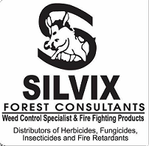Many industries and working sites are plagued by dust pollution. Besides polluting the ecological environment, the airborne dust particles encourage a hazardous, unproductive and wasteful working environment.
Airborne dust particles are a cause of poor visibility. Poor visibility is known to be an indirect cause of accidents, injury to people and damage to equipment.
More importantly, staff can inhale airborne dust particles that are 1 to 10 microns in size. This inhalation of dust could cause staff to develop lung related medical problems.
Further can dust pollution impair the most sophisticated equipment and technology.
The Department of Trade and Industry in South Africa has recently set stringent standards with the aim to control dust emission in the working environment. Organisations that do not comply with these standards will be held liable for disabilities caused to workers. These standards present industrial organisations with a challenging move to comply.
Dust Control and Suppression is an crucial factor in meeting environmental, health and safety requirements, helping and protecting employees and reducing site emissions.
Our Road Dust Control and Suppression product is an innovative formulation blended emulsified co-polymers, ionic modifiers, and the unique properties of the patented ionic surfactant Marine 3 Technologies (M3T).
Small quantities of the product is added to water. After being sprayed unto the road surface, the product will form a durable crossed linked matrix. The matrix bind the fine soil particles into larger, heavier particles, which are less prone to become airborne.
The product is biodegradable and environmentally friendly. It is not phototoxic and can be safely applied to vegetation.
Advantages of Dust Control & Suppression Products.
Save water: Use between 40 - 80% less water.
Fewer spraying trips, thus: Using less fuel.
Reduce carbon footprint.
Reduce vehicle maintenance.
Reduce man-hours.
Increase safety.
Reduce water run-off, therefore reducing road degradation due to less run-off furrows - thus less road maintenance.
For more information, visit the Dust Control & Suppression website...(click on this link).
Airborne dust particles are a cause of poor visibility. Poor visibility is known to be an indirect cause of accidents, injury to people and damage to equipment.
More importantly, staff can inhale airborne dust particles that are 1 to 10 microns in size. This inhalation of dust could cause staff to develop lung related medical problems.
Further can dust pollution impair the most sophisticated equipment and technology.
The Department of Trade and Industry in South Africa has recently set stringent standards with the aim to control dust emission in the working environment. Organisations that do not comply with these standards will be held liable for disabilities caused to workers. These standards present industrial organisations with a challenging move to comply.
Dust Control and Suppression is an crucial factor in meeting environmental, health and safety requirements, helping and protecting employees and reducing site emissions.
Our Road Dust Control and Suppression product is an innovative formulation blended emulsified co-polymers, ionic modifiers, and the unique properties of the patented ionic surfactant Marine 3 Technologies (M3T).
Small quantities of the product is added to water. After being sprayed unto the road surface, the product will form a durable crossed linked matrix. The matrix bind the fine soil particles into larger, heavier particles, which are less prone to become airborne.
The product is biodegradable and environmentally friendly. It is not phototoxic and can be safely applied to vegetation.
Advantages of Dust Control & Suppression Products.
Save water: Use between 40 - 80% less water.
Fewer spraying trips, thus: Using less fuel.
Reduce carbon footprint.
Reduce vehicle maintenance.
Reduce man-hours.
Increase safety.
Reduce water run-off, therefore reducing road degradation due to less run-off furrows - thus less road maintenance.
For more information, visit the Dust Control & Suppression website...(click on this link).


 RSS Feed
RSS Feed

